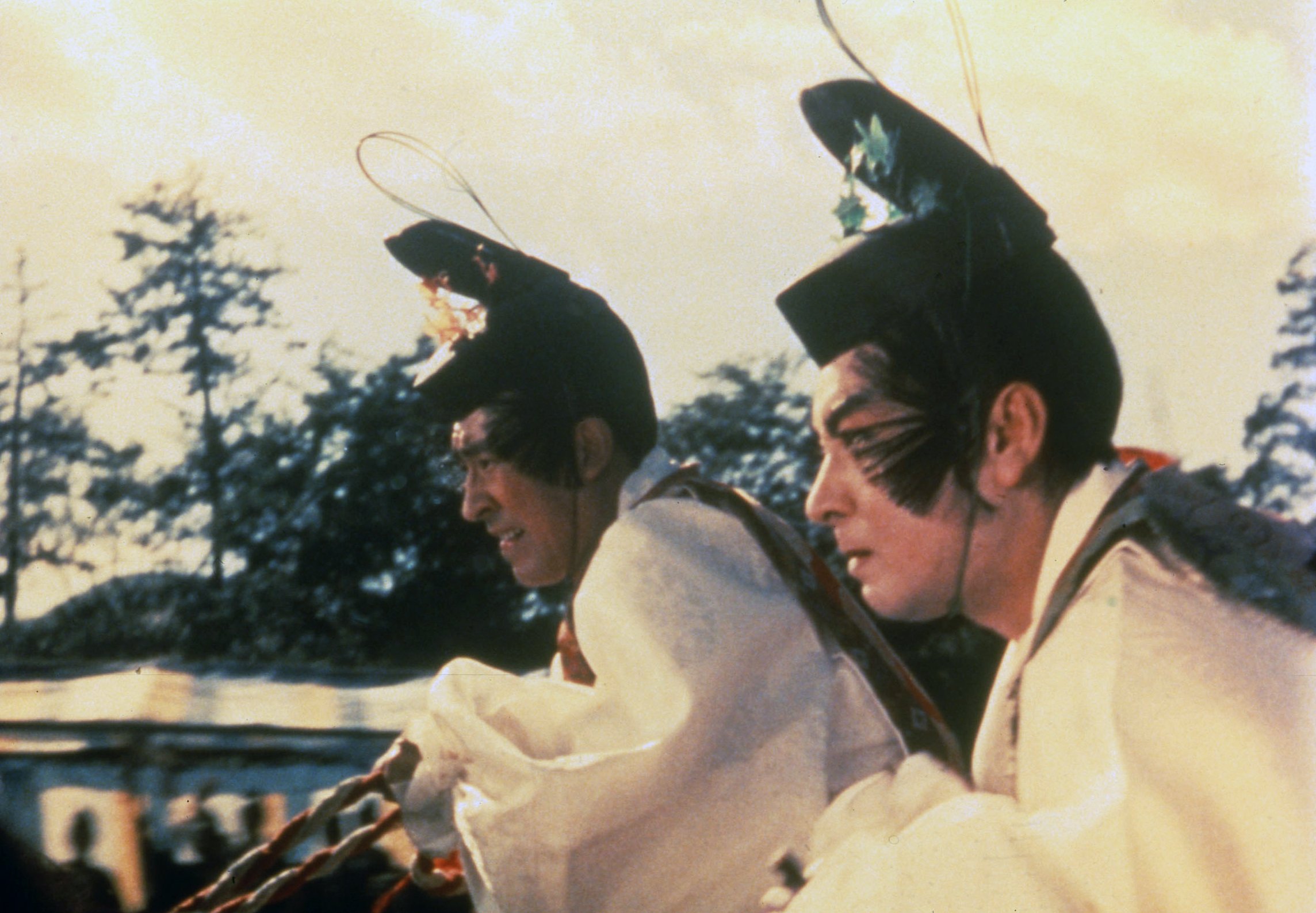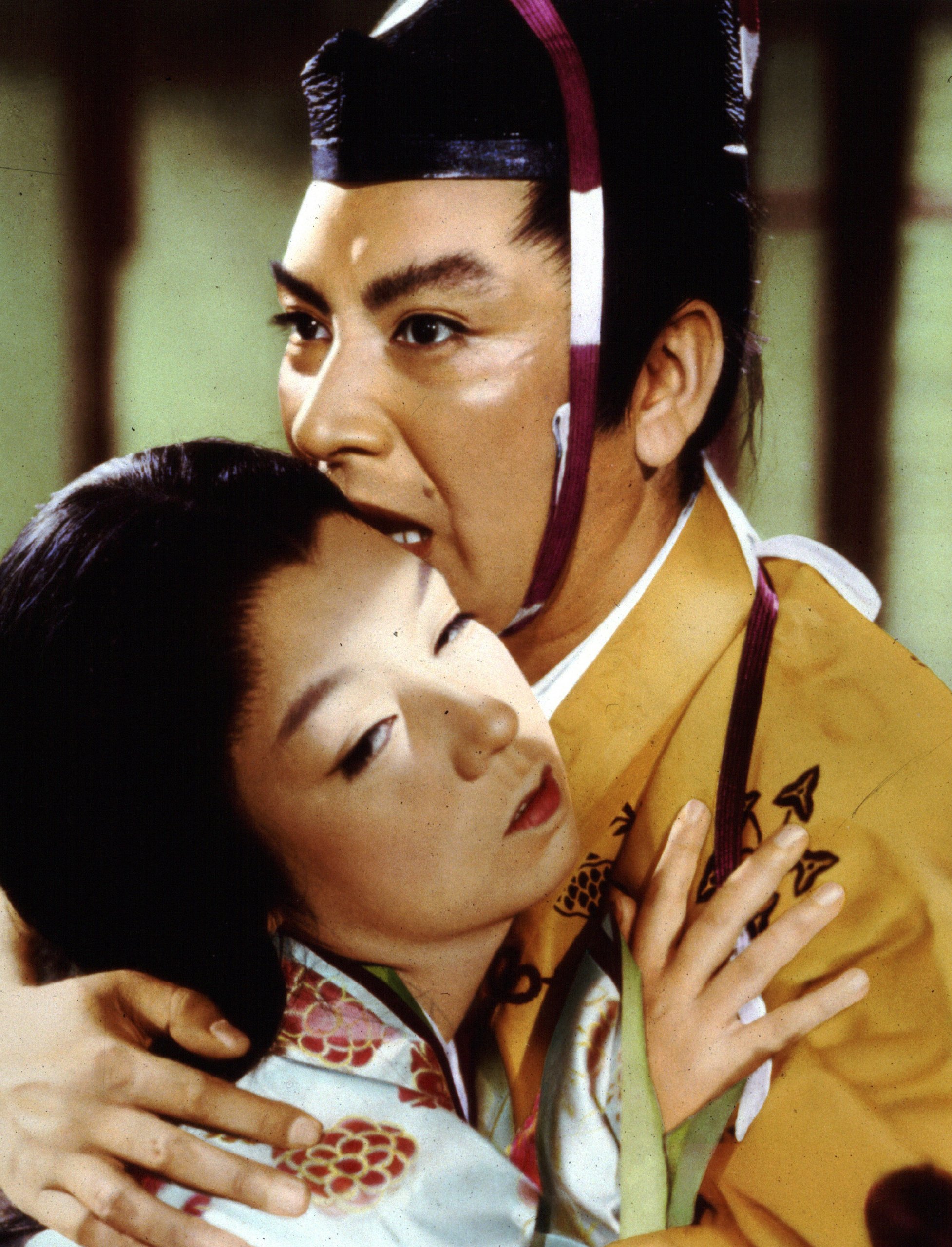![Gate of Hell (The Criterion Collection) [DVD]](https://m.media-amazon.com/images/I/91vg-3pahbL.jpg)





A winner of Academy Awards for best foreign-language film and best costume design, GATE OF HELL is a visually sumptuous, psychologically penetrating work from Teinosuke Kinugasa (A Page of Madness). In the midst of epic, violent intrigue in twelfth-century Japan, an imperial warrior falls for a lady-in-waiting; even after he discovers she is married, he goes to extreme lengths to win her love. Kinugasa's film is an unforgettable, tragic story of obsession and unrequited passion that was an early triumph of color cinematography in Japan.
D**)
Haunting, beautiful film that packs a punch
The self-anointed 'dean' of Western critics of Japanese film, Donald Richie, famously said that GATE OF HELL (Japanese JIGOKUMON) was a "limp film with flaccid performances by Hasegawa Kazuo and Kyo Machiko" (he inverts the names of the actors as they do in Japanese -- think similarly Bartok Bela in the Hungarian usage). I don't know if he was having a bad day when he saw the film or if he was coming down from one of his benders when he wrote his critique, but he could not have been more wrong. I refer you to M. Hart's review for a précis of the storyline. I want to concentrate on the quality of the film itself.If anything Hasegawa's performance as the samurai Moritoh is anything but flaccid. Indeed his style is rather overripe for many Western viewers but I believe the director Teinosuke Kinugasa wanted to contrast his behavior with that of the sad-faced Lord Wataru, wonderfully underplayed by Isao Yamagata (I am not inverting Japanese names in this review). Moritoh is all snarling fury and barely suppressed rage while Wataru is all reasonableness and dignity. The object of their devotion, Lady Kesa, is stunningly played by Machiko Kyo who gives perhaps her greatest performance or at least one of her greatest. Having seen this film something like eight times, I find that I am ever more riveted by the subtlety of her every gesture and expression. Indeed I watched this film a couple of days ago and I discovered an ambiguity in her reaction to the blandishments of Moritoh that I had never caught before. Multiple viewings of this film will similarly reward you.If you want some background on the history and culture of Japan that will greatly help you understand the context of this film, and any Japanese film for that matter, you might want to read George Sansom's 3-volume history of Japan. It is an older work but a fairly thorough one. A more recent, and shorter, history is JAPAN: ITS HISTORY AND CULTURE by W. Scott Morton and J. Kenneth Olenik. Also recommended is JAPANESE CULTURE by Paul Varley. These books clarify the Heian Era in which this film takes place and will explain references to the Taira clan, the role of Buddhist monks as rulers, and the the controversial role of the emperor Go-Shirakawa.Oh, and like everyone else who watches GATE OF HELL, you will be stunned by the truly amazing color palette and cinematography provided by Kinugasa and Kohei Sugiyama. Please give this film a try -- you won't be sorry.
N**E
Penitence, after a fall.
A number of excellent "customer reviews" about this film are already posted on Amazon, which I heartily recommend.This film is such a rare and important film, and virtually unknown to U.S. audiences, that I want to add my "five star" recommendation to attempt to draw attention to this rare gem, one of my top, all-time favorite films.I first learned of this film in the 1950s, when my parents viewed the film, while the film was on extremely limited release in movie "art theaters" in the U.S. At the time, I only heard about this film's title and basic storyline. I always wanted to see this movie, but it was impossible to obtain. I had to wait forty years, until the 1990s, when I finally viewed this film in a "repertory" movie theater in Washington, D.C.I finally obtained a video copy of this film, and then, finally a DVD from the Criterion Collection, which wisely chose to offer this (presumably restored) film to the pubic in DVD form, for which I am very grateful.I cannot add much to the wonderful customer reviews of this film that are already posted on Amazon. However, the jacket to the DVD disc in the Criterion Collection contains this astutely concise observation:"Winner of Academy Awards for best foreign film and best costume design, GATE OF HELL is a visually sumptuous, psychologically penetrating work from Teinosuke Kinugasa. In the midst of epic, violent intrigue in twelfth-century Japan, an imperial warrior falls for a lady-in-waiting; after he discovers she is married, he becomes frenzied in his attempts to win her love. Kinugasa's film, an early triumph of color cinematography in Japan, is an unforgettable, tragic story of obsession and unrequited passion."The film's initial credits state that the movie is based upon a play, which is ironically titled KESA'S HUSBAND. View the film, and contemplate the meaning of this original title.The film's title, GATE OF HELL, has a double meaning - a monumental gate in a city wall, where severed heads of executed persons are publicly displayed, and the psychological "gate of hell" that the imperial samurai must endure, following his unwitting murder of the lady-in-waiting who he obsessively coveted.The Criterion Collection's DVD comes with a fold-out insert, which probably contains much more English-language information about this film that one will obtain on-line, and which adds to the wonderful customer reviews of this film already posted on Amazon.
D**.
A FEAST OF FABRICS! VIVID, SUMPTUOUS, EXQUISITE, JAW-DROPPING!
I am reviewing the Blu-ray version of this film from Masters of Cinema. It has been digitally restored, so the picture and sound are pristine.My husband and I have eclectic tastes in film, and I was attracted to this partly because it won the 'Best Foreign Film' Oscar in 1954, the year before the class was officially introduced. It also won the Palme d'Or. I had read that it was colourful and a visual treat, but nothing had really prepared us for what we saw. This quite short film (91 mins) is a feast of fabrics! The costumes, and the fabrics used to dress the houses and rooms at the royal court, are vivid, sumptuous, exquisite, jaw-dropping. The men and women wear costumes covered in beautifully designed patterns and pictures, fabulous in both form and colour. Frankly, even without the very well-designed and nimble subtitles, you could watch this film for the visual delights alone.The story is not complex, but is sad and well-handled. The 4 main protagonists - the heroine, her husband, her suitor and the Clan Lord - are all well drawn and well handled. And there are some nice action pieces, especially the horse race and the feast that follows. There is also some rather lovely musicianship on a Japanese instrument.If you want to expand your boundaries beyond the standard block busters, have a look at this film. You are unlikely to be disappointed.
S**E
A Real Feast For The Eyes!
Gate of Hell was released all the way back in 1953. The movie was directed by Teinosuke Kinugasa, features some stunning cinematography by Kohei Sugiyama and has excellent performances from the three lead actors, Kazuo Hasegawa, Machiko Hyo and Isao Yamagata. According to what I've read, this film was one of the first movies in the history of Japanese cinema to utilise colour and was the first colour film to be released outside the country. The movie even won the grand prize at the 1954 Cannes Film Festival, an honorary Academy Award in 1955 and more. A pretty impressive achievement, if I do say so.The film has a nice basic story, one full of emotions and a lot intensity. The lead character Morito Endo saves the life of the Empress during a raid on the palace during the Heiji Rebellion. Soon after he takes a fancy to the beautiful Lady Kesa whose hand he demands in marriage as a reward for his services in battle. One problem, Kesa is already taken by Morito's superior Watanabe. This causes his emotions to boil and eventually explode in a tail of infatuation, obsession, competition and eventual terror. It's a pretty well told story that escalated perfectly at the end. It's an excellent climax to a very well paced movie.I mentioned earlier about the use of colour in this film. Most Samurai films I have seen have all been in black and white. They are all beautifully done in their own right but when it comes to being a real treat for the eyes, Gates of Hell is heads and shoulders above the rest. I can not tell you just how beautiful the sharp detail, clarity and colours are in this movie. You can see every tiny detail in the fabrics, dresses, armour sets etc. It's an absolutely gorgeous film and everyone responsible deserves every bit of praise for their use of colour. I would kill for a movie in this day and age to have this level of visual intensity. We just don't see it enough in modern films.Talking of the visual quality, anyone interested in this film will be very pleased to know that the actual film quality is near enough perfect. The film has been superbly restored and looks near enough flawless throughout. There are a few extremely minor scratches here and there but this is easily one of the best looking 1950s Japanese films I have seen. God knows, I wish Toho would put more effort into restoring their content. Clearly it can be done.In terms of Japanese and Asian cinema, I would say this should be on your to buy list. This is a great film, a really great film. It's simple enough that even the most basic of people can follow it, it's visually stunning and the pacing is absolutely perfect. Do yourself a favour and pick it up. I couldn't recommend it more.
R**R
A must see if you like old Japanese films
This was the first film of its kind in colour, and it shows ! A true feast for the eyes as every colour known to mankind bursts from the screen. The story of an impossible love affair is Japanese tragedy at its very best. No happy end here. Great stuff !!
O**V
Dark story of obsession and lust
Another terrific presentation from Masters of Cinema. Excellent dual format quality with a superb accompanying booklet. I am never disappointed by this company. The film is in ravishing colour and worth watching just for that. The clothes shimmer with light and colour. As other reviewers have noted the opening twenty minutes is filled with frantic activity as the castle is attacked and people are either fleeing or fighting. This is directed beautifully and sets the scene for the later obsessive and pigheaded pursuit of another man's wife by the protagonist. The direction appears a little stagey in that the director often uses a fixed camera (and backdrops a la Kwaidan) however, the acting is superb and the (spoiler alert) descent into madness, murder and regret is brilliant. A great example of Japanese cinema.
I**F
Great deal on a great film well presented package.
Great for the price, got it on offer. Classic film Great booklet with the Discs. Can't go wrong, I took a punt and am well satisfied
Trustpilot
3 weeks ago
3 weeks ago